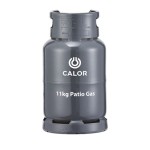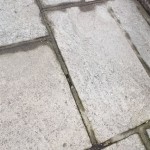Granite Patio Tiles: A Durable and Elegant Outdoor Flooring Solution
Granite patio tiles represent a popular and enduring choice for homeowners seeking a robust, aesthetically pleasing, and low-maintenance outdoor flooring option. Their inherent strength, coupled with a diverse range of colors and textures, makes them suitable for a variety of design styles and climates. This article will explore the characteristics of granite patio tiles, their advantages, factors to consider during selection, and the best practices for installation and maintenance.
Understanding Granite: Key Properties and Composition
Granite is an igneous rock formed from the slow cooling of magma deep beneath the Earth's surface. This slow cooling process allows for the formation of large, interlocking crystals, giving granite its characteristic granular texture and exceptional hardness. Its primary mineral constituents typically include quartz, feldspar, and mica, contributing to its varied color palette, ranging from light grays and pinks to darker blacks and greens.
The density of granite contributes significantly to its durability and resistance to wear and tear. Its strength allows it to withstand heavy foot traffic, furniture placement, and exposure to extreme weather conditions without cracking or chipping easily. This inherent toughness makes granite an ideal material for outdoor applications like patios, where surfaces are constantly subjected to environmental stressors.
Furthermore, granite is relatively non-porous, making it resistant to staining and water absorption. This characteristic is particularly beneficial for patios, as it minimizes the risk of damage from spills, rain, and freeze-thaw cycles. Proper sealing can further enhance its resistance to stains and water penetration, ensuring its longevity and preserving its aesthetic appeal.
Advantages of Using Granite Patio Tiles
Granite patio tiles offer a multitude of advantages that make them a compelling choice for homeowners looking to enhance their outdoor living spaces. These benefits include enhanced durability, aesthetic versatility, low maintenance requirements, and increased property value.
Durability and Longevity: As previously mentioned, granite's inherent strength and resistance to wear and tear are key advantages. It can withstand heavy use, temperature fluctuations, and exposure to the elements without significant degradation. This longevity translates to a cost-effective solution in the long run, as granite patios require less frequent replacement compared to other paving materials.
Aesthetic Versatility: Granite is available in a wide array of colors, patterns, and finishes, allowing homeowners to create a customized patio design that complements their home's architectural style and landscaping. From classic gray tones to more vibrant shades, the natural variation in granite ensures a unique and visually appealing surface. Different finishes, such as polished, honed, or flamed, can further enhance the aesthetic appeal and provide different levels of slip resistance.
Low Maintenance Requirements: Granite's non-porous nature makes it relatively easy to clean and maintain. Regular sweeping and occasional washing with mild soap and water are typically sufficient to keep the patio looking its best. Sealing the granite periodically can further protect it from stains and water damage, but even without sealing, granite requires minimal upkeep compared to other materials like wood or concrete.
Increased Property Value: Installing a granite patio can enhance the overall value of a property. Its durable, attractive, and low-maintenance qualities are appealing to potential buyers, making it a worthwhile investment for homeowners looking to improve the curb appeal and functionality of their outdoor spaces.
Factors to Consider When Selecting Granite Patio Tiles
Choosing the right granite tiles for a patio involves careful consideration of several factors, including the type of granite, tile size and thickness, finish, color, and cost. Evaluating these aspects will help homeowners make informed decisions and achieve the desired aesthetic and functional outcomes.
Type of Granite: Different types of granite vary in their color, texture, and mineral composition. Some popular options include: Absolute Black Granite, known for its uniform dark color; Uba Tuba Granite, characterized by its iridescent green and gold flecks; and Baltic Brown Granite, displaying a rich brown and beige palette. Selecting a type that aligns with the desired aesthetic and functional requirements is crucial.
Tile Size and Thickness: The size and thickness of the tiles will impact both the appearance and the structural integrity of the patio. Larger tiles can create a more expansive and seamless look, while smaller tiles may be better suited for intricate designs or smaller spaces. Thicker tiles are generally more durable and resistant to cracking, particularly in areas with heavy foot traffic or extreme weather conditions. Commonly used sizes are 12x12 inches, 18x18 inches, and 24x24 inches with thicknesses ranging from ¾ inch to 1 ¼ inch.
Finish: The finish of the granite tiles affects both their appearance and slip resistance. Polished finishes offer a glossy and reflective surface, enhancing the color and pattern of the granite. Honed finishes provide a matte look with a smoother texture, offering a good balance between aesthetics and slip resistance. Flamed finishes create a textured, non-slip surface, making them ideal for areas prone to moisture or heavy foot traffic. Brushed and tumbled finishes can also provide unique textures and appearances.
Color: The color of the granite should complement the overall design of the home and surrounding landscape. Consider the existing color palette of the exterior walls, roofing, and landscaping elements when selecting the granite color. Lighter colors can brighten up a space and create a more open feel, while darker colors can add a sense of sophistication and drama.
Cost: The cost of granite patio tiles can vary depending on the type of granite, tile size, thickness, finish, and quantity purchased. Obtain quotes from multiple suppliers and compare prices to ensure a competitive deal. Consider installation costs as well, as professional installation is often recommended for optimal results. While granite may be more expensive initially than some other paving materials, its longevity and low maintenance can make it a cost-effective choice in the long term.
Installation Best Practices for Granite Patio Tiles
Proper installation is crucial to ensuring the longevity, stability, and aesthetic appeal of a granite patio. Following industry best practices and employing experienced professionals can help homeowners achieve optimal results. This section outlines key steps in the installation process.
Site Preparation: The first step involves preparing the site by excavating the area to the required depth. The subgrade should be compacted to provide a stable base for the patio. Any existing vegetation, debris, and unstable soil should be removed. A slight slope should be incorporated to ensure proper drainage away from the house.
Base Layer: A base layer of compacted gravel or crushed stone is essential for providing drainage and distributing weight evenly. The base layer should be at least 4-6 inches thick, depending on the soil conditions and anticipated load. Compacting the base layer in lifts ensures stability and prevents settling over time.
Setting Bed: A setting bed of sand or a mixture of sand and cement is used to level the surface and provide a bonding layer for the granite tiles. The setting bed should be approximately 1-2 inches thick and evenly distributed over the base layer. Using a screed board ensures a consistent and level surface for tile placement.
Tile Placement: Carefully place the granite tiles onto the setting bed, ensuring proper spacing and alignment. Use spacers to maintain consistent joint widths between the tiles. Gently tap the tiles with a rubber mallet to ensure they are firmly seated in the setting bed. Check the level of each tile and make adjustments as needed.
Grouting: Once the tiles are set, grout the joints with a suitable grout designed for outdoor use. Choose a grout color that complements the granite tiles and enhances the overall aesthetic. Apply the grout evenly and remove any excess grout from the tile surface. Allow the grout to cure according to the manufacturer's instructions.
Sealing (Optional): Sealing the granite patio tiles can provide additional protection against stains, water damage, and weathering. Apply a high-quality sealant specifically designed for natural stone, following the manufacturer's instructions. Reapply the sealant periodically as needed to maintain its protective properties.
Maintaining Your Granite Patio
Proper maintenance is key to preserving the beauty and extending the lifespan of a granite patio. Regular cleaning, prompt stain removal, and periodic sealing can help keep the patio looking its best for years to come.
Regular Cleaning: Sweep the patio regularly to remove dirt, leaves, and debris. Wash the patio with mild soap and water as needed to remove stains and grime. Avoid using harsh chemicals or abrasive cleaners, as they can damage the granite surface. A pressure washer can be used with caution, using a low-pressure setting and a wide nozzle to avoid etching the granite.
Stain Removal: Address spills and stains promptly to prevent them from penetrating the granite surface. Blot up any liquids immediately with a clean cloth. For stubborn stains, use a stone-specific stain remover or a mixture of baking soda and water. Avoid using acidic cleaners, such as vinegar or lemon juice, as they can etch the granite.
Sealing: Periodically reseal the granite patio tiles to maintain their protection against stains and water damage. The frequency of resealing will depend on the type of sealant used and the level of exposure to the elements. Follow the manufacturer's instructions for resealing and ensure the patio is clean and dry before applying the sealant.
Winter Maintenance: In regions with cold climates, take precautions to protect the granite patio from freeze-thaw damage. Remove snow and ice promptly to prevent water from seeping into the joints and cracking the tiles. Avoid using de-icing salts, as they can damage the granite surface. Opt for sand or a stone-safe de-icer instead.

Granite Pavers New Reclaimed Flagging Stonewoods Com

Granite Pavers New Reclaimed Flagging Stonewoods Com

Walkways Patios Swenson Granite Works

Walkways Patios Swenson Granite Works

Granite Paving Slabs Patio Slab Supplier

Laying Patio Pavers Polycor Inc

Walkways Patios Swenson Granite Works

Granite Paving Slabs Patio Slab Supplier

Choosing The Right Outdoor Tiles For Your Space Niro Granite

8 Outdoor Flooring Options D S








